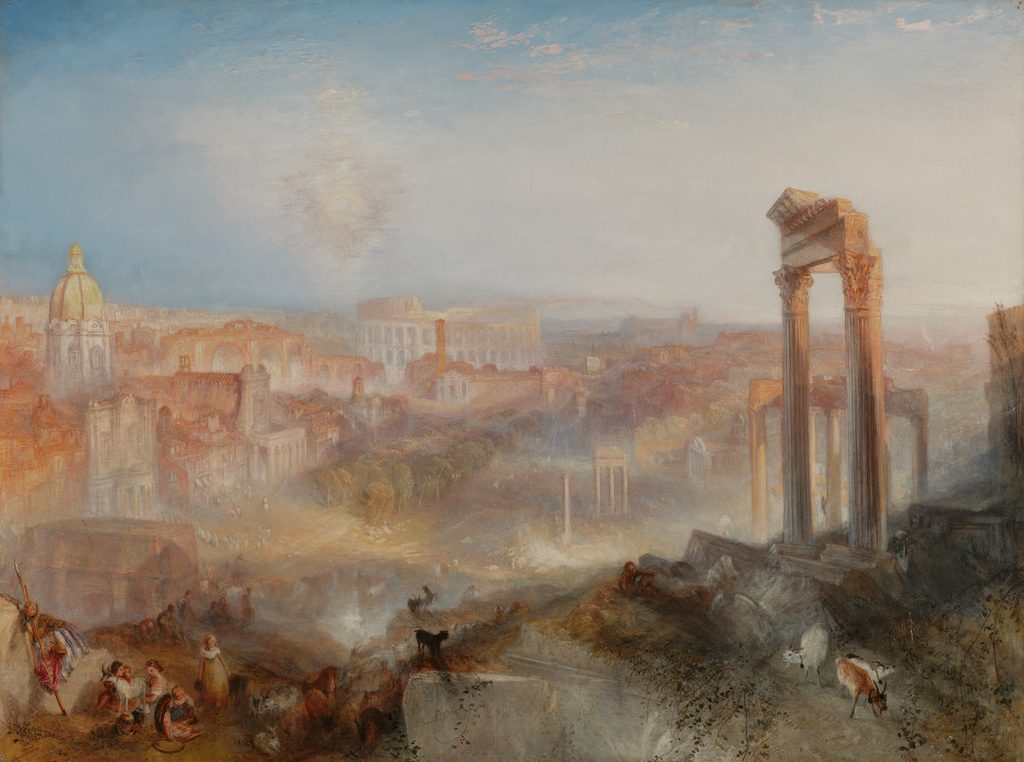
Joseph Mallord William Turner (British, 1775 – 1851), Modern Rome – Campo Vaccino, British, 1839, courtesy The J. Paul Getty Museum
International Cultural Property
What makes “art” cultural property? For legal purposes, cultural property is whatever the law describing it says it is. For example, under the 1970 UNESCO Convention on Cultural Property, the term includes stamps, coins, historical documents, paintings, drawings, sculptures, photographs, botanical, mineral, and fossil specimens and many more objects, in age from the beginning of time until the present. One US law, the Convention on Cultural Property Implementation Act of 1983, has a much narrower definition; it covers antiquities over 250 years old and ethnological objects made by tribal societies. (This description has been stretched to include colonial ecclesiastical artworks as “tribal,” something the Catholic Church might find disconcerting.) The relative importance of an object, and its economic value are also considerations under various US laws.
Cultural property is clearly different from other forms of property, where a good faith purchaser for value generally takes title. Sovereign foreign nations and tribal or cultural groups may claim ownership based upon law, national or tribal identity, or moral rights. Unusual restrictions may apply to transportation across borders, and international treaties may create obligations between nations to restrict trade or repatriate art and artifacts long in circulation. Even the materials that an antique or ancient object is made of – feathers, ivory, tortoise shell, or other natural materials – can affect its lawful possession and transfer.
The effect of both US domestic law and foreign laws on title and ownership of cultural property is legally complex. Our firm assists owners to identify possible claims and civil or criminal exposure from purchase or sale.
We work together with clients and museums to facilitate charitable gifts of artworks. Gifting to a museum is the most enduring and positive legacy that a collector can leave behind. Even if legal ownership is not at issue, self-imposed ethical rules regarding donation and loans of cultural property may deter museums from accessioning items from private collections.
We encourage and assist clients to document artworks, to research the objects’ history of import and prior ownership. When a collection passes at the owner’s death to individual beneficiaries, we can help to document the transfer. If art must be sold, we provide the fiduciary with assistance in dealing with an unfamiliar market.
You’ll find a lengthy discussion of international cultural property issues and laws with guidance for legal advisers here.
Information on this website is not legal advice or a substitute for legal advice. The transmission or receipt of the information contained on this website does not create an attorney-client relationship, and you should not act upon such information without seeking professional counsel. This website contains links to other websites. Fitz Gibbon Law, LLC does not necessarily endorse, sponsor, or otherwise approve of the materials at such sites.